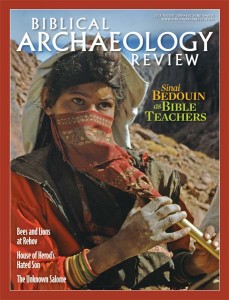Little known to many westerners, Southern Arabia, the land of the Queen of Sheba, played an important role in antiquity. Drawn from 70 works—alabaster sculptures, statues, relief carvings and inscribed blocks—dating from the third century B.C. to the third century A.D., this exhibit focuses on the ancient kingdoms of Southern Arabia.
The kingdoms’ wealth was based on two factors: productive agriculture and precious commodity trade with Egypt, the civilizations of the Near East and, later, with the Hellenistic and Roman empires.
The Stela with Female Bust (below), which dates between the first century B.C. and the first century A.D., is one of the finest examples of its kind and was probably produced in one of the premier ancient South Arabian workshops. The alabaster stela depicts the upper torso of a woman emerging from a kind of roundel. An inscription on the base names the man who donated the piece to the temple. The figure has raised her right hand in a gesture of blessing or intercession and holds in her left hand a wheat bundle, a symbol of fecundity.
Already a library member? Log in here.
Institution user? Log in with your IP address.

